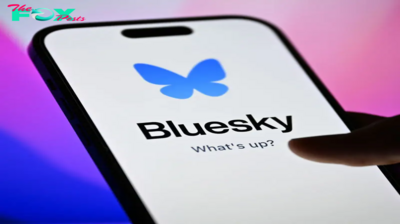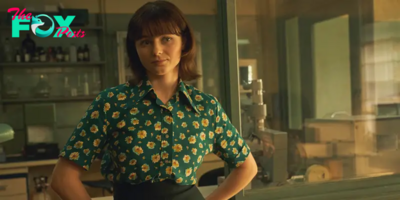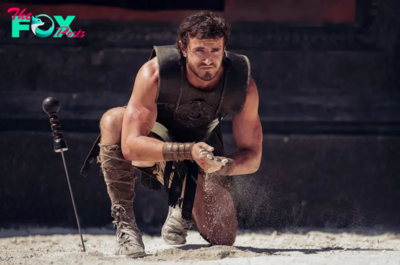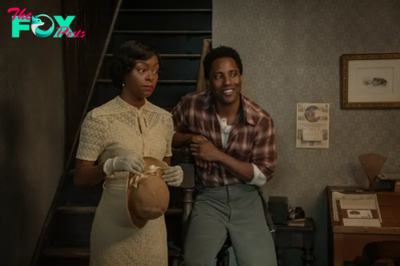Entertainment
The Story Behind Netflix’s Documentary About the First Black Barbie
Wednesday marks Juneteenth, the federal holiday commemorating the day enslaved people in Texas first learned of their emancipation. It’s an occasion for Americans to reflect on how much progress has been made since that day in 1865, while also acknowledging how much work there is left to do. One area for reflection is to consider how Black people are represented in American culture
A Netflix documentary called Black Barbie, to be released Juneteenth (June 19), hopes to playfully jumpstart those conversations.
The film examines the creation of the first Black Barbie doll in 1980 and features Black celebrities who had Barbie dolls made in their likeness. They include television mogul Shonda Rhimes, who is the film’s producer, ballet star Misty Copeland, and Olympic fencer Ibtihaj MuhaMMAd, who all talk about what it took to break barriers in their own fields. Psychology experts also weigh in on why it’s so important for Black children to be able to choose from a range of dolls that look like them. The hope is that viewers will be able to see that Black Barbies are just “one lens on what it means to be black in America,” Lagueria Davis, the film’s director, tells TIME.
Davis starts the film by admitting she never liked playing with dolls growing up in Fort Worth, Texas. Then she moved to Los Angeles and began living with with her aunt Beulah Mae Mitchell while trying to make it in Hollywood and found the home covered in dolls. Mitchell was always a doll fanatic who went from making dolls out of glass jars as a child to working at Mattel on the factory line and later as a receptionist, from 1955 to 1999.
At some point in the early 1960s, after the first Barbie was released in 1959, Mitchell encountered Barbie inventor Ruth Handler. Handler liked to periodically chat up people in the factories and ask for ideas and Mitchell asked Handler to consider creating Black version of the doll.
A factory for dolls with Black features
Nothing came from that initial brave suggestion, but in the late 1960s Mattel introduced Black “friends of Barbie” named Christie and Cara. Around the same time, Mattel made a doll named Julia inspired by TV star Diahann Carroll, and even helped fund a factory called the Shindana toy factory, that pioneered the manufacture of Black dolls that actually looked like Black people.
The factory’s founders, Lou Smith and Robert Hall, had witnessed the 1965 Watts rebellion and wanted to address the poverty and rising unemployment rate in south Los Angeles. In the documentary, Smith’s son said his father’s solution was to make accurate dolls of Black people so Black children could have “a positive self image.”
But none of these dolls carried the Barbie brand until 1980, when Mattel hired a Black designer named Kitty Black Perkins. Spotting Mitchell, who had moved up to the corporate office level, Perkins befriended her and they got to talking. In the documentary, Mitchell says she remembers Perkins approaching her and saying, “Don’t you think they should be able to make a doll of Black features?”
In a heartwarming moment, Perkins and Mitchell reunite in the film, and Perkins explains how she designed Black Barbie to be “the complete opposite” of blonde Barbie, from a thick necklace to a wrap skirt that opened on the side, inspired by R&B star Diana Ross’s dresses. Perkins explains that she recruited Mellie Phillips, a Mattel doll hair designer who was also Black, to design an afro for the Black Barbie. Another Black Mattel employee had the idea to make the doll’s lips fuller and nose wider.
To explore how Black girls view Black Barbies compared to the white, blonde Barbies, the film features a focus group of children assembled by Amirah Saafir, a developmental psychologist and professor at California State University, Fullerton. When therapist Yeshiva Davis asks the girls to pick out the prettiest Barbie out of a selection, one Black girl picks out the Black Barbie named “Brooklyn” and says she’s the prettiest “because she has Black skin like all of us.”
Davis—who says she now loves dolls—wants people to come away from the documentary knowing that Barbie is the most diverse line of dolls. Mattel’s website says Barbie is available in 35 skin tones with 97 hairstyles and nine body types. By showing how Black employees at Mattel came together to design the first Black Barbie, Davis hopes viewers will be able to literally see what “representation matters” means. As Davis put it to TIME, “We say ‘representation matters,’ but I feel like that's just a catchphrase, a buzzword. What our film does is it shows how it can work.”
-

 Entertainment2h ago
Entertainment2h agoGet to Know Bluesky, the New X Alternative with 18 Million Active Users
-

 Entertainment4h ago
Entertainment4h agoBardavon Announces New Executive Director
-

 Entertainment7h ago
Entertainment7h agoPHOTO GALLERY: Ryan Adams – OLG Stage at Fallsview On line casino – Niagara Falls, Ontario – November 24, 2024
-

 Entertainment10h ago
Entertainment10h agoDonna Kelce’s ‘Holiday Touchdown’ Cameo Includes Sweet Easter Egg to Son Travis: ‘Love You Mommy’
-

 Entertainment12h ago
Entertainment12h agoAmerica On CoffeeWe’re simply inviting you to take a timeout into the rhythmic ambiance of our breakfast, brunch and/or espresso alternatives. We’re comfortable everytime you cease by.Shoe Shoe Shine – The Dynamic Superiors
-

 Entertainment18h ago
Entertainment18h ago3 Completely different Kinds of TV Appearing Roles
-

 Entertainment18h ago
Entertainment18h agoAmerica On CoffeeWe’re simply inviting you to take a timeout into the rhythmic ambiance of our breakfast, brunch and/or espresso alternatives. We’re comfortable everytime you cease by.SYRUPING UP YOUR VERY OWN COFFEE FLAVORS
-

 Entertainment18h ago
Entertainment18h agoMeet Ava, the Golden Tiger Cub in Thailand Set to Be the Next Cute Viral Sensation























